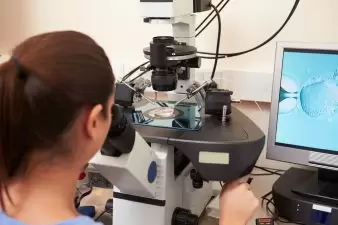 In the United States, nearly every medical procedure comes with an associated cost. Even individuals with quality health insurance can still face significant expenses after an accident, extended hospital stay, or intense surgery.
In the United States, nearly every medical procedure comes with an associated cost. Even individuals with quality health insurance can still face significant expenses after an accident, extended hospital stay, or intense surgery.
Non-emergency expenses can still lead to medical debt, especially for specialized treatments. Unfortunately, these costs lead individuals to go without important medical care. For example, nearly 30% of those over 70 who could benefit from hearing aids have never used them.
If you need or have recently undergone any kind of treatment, chances are you’re worried about finding a way to pay. In many cases, going into credit card debt or personal loan debt to pay for medical treatment seems preferable to going without essential care.
Before you decide to open a new credit card, be sure you’ve weighed all of your payment options. Use the following five tips to pay for medical treatment without risking your financial health:
1. Make Sure the Bill Is Accurate
Before you even consider how you’ll pay for medical treatments, ensure that the hospital has charged you correctly. If something doesn’t seem quite right, it’s time to start making phone calls. Though it sounds surprising, you can often negotiate medical bills to have some fees reduced or eliminated. If you’ve been charged thousands of dollars for an exam and a few bandages, let the hospital billing department know you won’t be able to pay the original amount unless they work with you to reduce it. Or, consider hiring a medical bill negotiator to sort through the issue.
2. Double-Check Your Insurance Policy
You have insurance for a reason. Though insurance rarely covers elective surgeries like the 290,467 breast augmentation procedures performed in 2016, if your surgery wasessential, take time to ensure that your insurance is pulling their weight. Even the most basic insurance plan should be able to cover simple treatments or emergency care. The supplier likely sent you an Explanation of Benefits (EOB) that contains billing information, so start by examining that document for possible oversights.
3. Explore Other Payment Options
Once you’ve verified that your bill is accurate, and negotiated appropriately to have it corrected or lowered, it’s time to start considering payment options. If your injury occurred during work duties or impacts your ability to work, research whether you might qualify for worker’s compensation. Since 74% of states require worker’s comp coverage, the odds are in your favor. Consider researching the following payment methods as well, since they may be able to reduce your medical debt from the start:
- Payment plans
- Income-driven hardship plans
- Charity programs for serious cases or your specific illness
4. Look For Credit Cards with Lower Risks
After taking these steps, you could still be left with a lump sum to pay that can’t be spread out in installments. If this is the case, you might have no choice but to look for a credit card. Try applying for a medical credit card specifically designed for health-related debt, which should have an interest-free period of six to 12 months. If you have exceptionally good credit, you may even qualify for an unlimited interest-free period. Finding a credit option with the lowest interest rate possible will help minimize the amount you ultimately pay for your treatment.
5. Manage Payments Carefully
Finally, once you’ve established a plan for paying for medical debt, try to keep up with payments and eliminate the debt as quickly as possible. According to FICO, keeping your credit utilization ratio within 30% of your original credit limit will best protect your financial security and credit score.
Health problems are scary, and they can be even more frightening when they lead to financial instability. Get back on your feet in less time by following these money-smart tips. With research, effort, and willingness to negotiate, you can better protect your financial and physical health.

